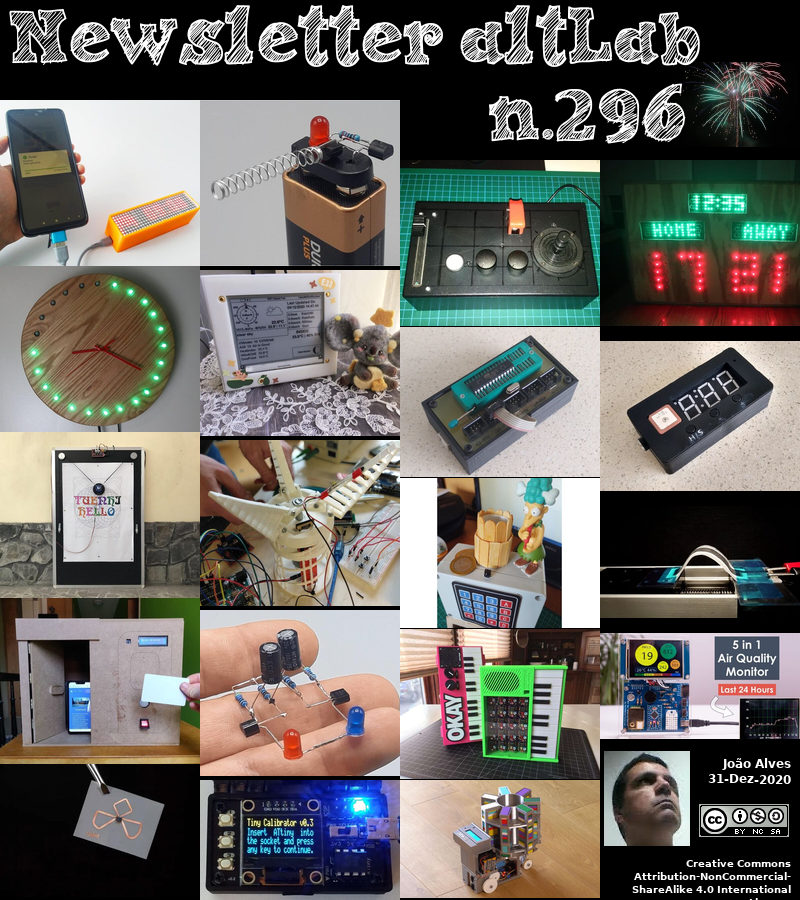2020-12-31 - Nº 296
Editorial
Esta é a Newsletter Nº 296 que se apresenta com o mesmo formato que as anteriores. Se gostar da Newsletter partilhe-a!
Todas as Newsletters encontram-se indexadas no link.
Esta Newsletter tem os seguintes tópicos:
Faz hoje anos que nascia, em 1952, o matemático neozelandês Vaughan Jones. Ele recebeu a Medalha Fields em 1990 pelo seu estudo de análise funcional e teoria dos nós. Em 1984, Jones descobriu uma relação entre as álgebras de von Neumann e a topologia geométrica. Como resultado, ele encontrou um novo invariante polinomial para nós e ligações no espaço 3d. Foi uma surpresa completa porque o seu invariante foi completamente ignorado pelos topologistas, apesar da intensa actividade em áreas estreitamente relacionadas durante os 60 anos anteriores.
Há 23 anos a Microsoft comprava o serviço de correio Hotmail por cerca de 400 milhões de dólares e relançava o mesmo como MSN Hotmail.
Na Newsletter desta semana apresentamos diversas noticias, artigos científicos assim como projetos de maker. São apresentados oito livros sobre a linguagem Python.
Celebra-se hoje o final do ano de 2020 e com ele a entrada num novo ano. Este ano que passa ficou marcado pela pandemia e pelo confinamento generalizado a que todos fomos obrigados. Nesta que é a ultima newsletter do ano, que é publicada mesmo nos últimos momentos do ano, resta-me desejar a todos um excelente ano de 2021 onde todos os projectos que por algum motivo tiveram que ser adiados, possam ser concretizados neste novo ano.
 João Alves ([email protected])
João Alves ([email protected])
O conteúdo da Newsletter encontra-se sob a licença  Creative Commons Attribution-NonCommercial-ShareAlike 4.0 International License.
Creative Commons Attribution-NonCommercial-ShareAlike 4.0 International License.
Novidades da Semana

Elon Musk says SpaceX will attempt to recover Super Heavy rocket by catching it with launch tower
"SpaceX will try a significantly different approach to landing its future reusable rocket boosters, according to CEO and founder Elon Musk. It will attempt to ‘catch’ the heavy booster, which is currently in development, using the launch tower arm used to stabilize the vehicle during its pre-takeoff preparations. Current Falcon 9 boosters return to Earth and land propulsively on their own built-in legs – but the goal with Super Heavy is for the larger rocket not to have legs at all, says Musk. The Super Heavy launch process will still involve use of its engines to control the velocity of its descent, but it will involve using the grid fins that are included on its main body to help control its orientation during flight to ‘catch’ the booster – essentially hooking it using the launch tower arm before it touches the ground at all. The main benefits of this method, which will obviously involve a lot of precision maneuvering, is that it means SpaceX can save both cost and weight by omitting landing legs from the Super Heavy design altogether. Another potential benefit raised by Musk is that it could allow SpaceX to essentially recycle the Super Heavy booster immediately back on the launch mount it returns to – possibly enabling it to be ready to fly again with a new payload and upper stage (consisting of Starship, the other spacecraft SpaceX is currently developing and testing) in “under an hour.” The goal for Starship and Super Heavy is to create a launch vehicle that’s even more reusable than SpaceX’s current Falcon 9 (and Falcon Heavy) system." [...]
Outras Notícias
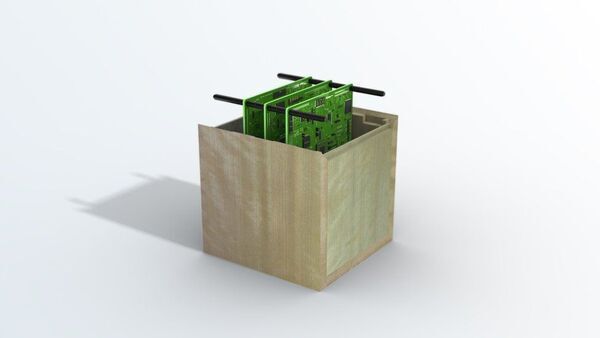
Japan developing wooden satellites to cut space junk
"A Japanese company and Kyoto University have joined forces to develop what they hope will be the world's first satellites made out of wood by 2023. Sumitomo Forestry said it has started research on tree growth and the use of wood materials in space. The partnership will begin experimenting with different types of wood in extreme environments on Earth. Space junk is becoming an increasing problem as more satellites are launched into the atmosphere. Wooden satellites would burn up without releasing harmful substances into the atmosphere or raining debris on the ground when they plunge back to Earth. Orbiting space junk collision 'avoided' Balloon 'taxi service' to take satellites to space UK Space Agency funds tech for orbital awareness "We are very concerned with the fact that all the satellites which re-enter the Earth's atmosphere burn and create tiny alumina particles which will float in the upper atmosphere for many years," Takao Doi, a professor at Kyoto University and Japanese astronaut, told the BBC." [...]
Ciência e Tecnologia

Ultracold atoms reveal a new type of quantum magnetic behavior
"The findings may help researchers design “spintronic” devices and novel magnetic materials. A new study illuminates surprising choreography among spinning atoms. In a paper appearing today in the journal Nature, researchers from MIT and Harvard University reveal how magnetic forces at the quantum, atomic scale affect how atoms orient their spins. In experiments with ultracold lithium atoms, the researchers observed different ways in which the spins of the atoms evolve. Like tippy ballerinas pirouetting back to upright positions, the spinning atoms return to an equilibrium orientation in a way that depends on the magnetic forces between individual atoms. For example, the atoms can spin into equilibrium in an extremely fast, “ballistic” fashion or in a slower, more diffuse pattern." [...]
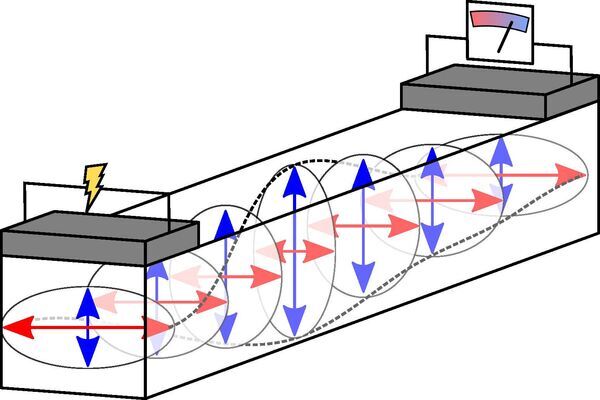
Faster and more efficient information transfer
"Physicists use antiferromagnetic rust to carry information over long distances at room temperature Be it with smartphones, laptops, or mainframes: The transmission, processing, and storage of information is currently based on a single class of material – as it was in the early days of computer science about 60 years ago. A new class of magnetic materials, however, could raise information technology to a new level. Antiferromagnetic insulators enable computing speeds that are a thousand times faster than conventional electronics, with significantly less heating. Components could be packed closer together and logic modules could thus become smaller, which has so far been limited due to the increased heating of current components. Information transfer at room temperature So far, the problem has been that the information transfer in antiferromagnetic insulators only worked at low temperatures. But who wants to put their smartphones in the freezer to be able to use it?" [...]

South Korea manages to light an artificial sun of more than 100 million degrees for 20 seconds
"The Korean artificial sun sets the new world operating record of 20 seconds at 100 million degrees, twice as long as South Korean researchers set last year A team of South Korean physicists have established a new world record with his « artificial sun« by turning it on and keeping it stable for 20 seconds. It is a device for nuclear fusion known as KSTAR (Korea Superconducting Tokamak Advanced Research). From hydrogen, the scientists obtained a plasma (the fourth state of matter) composed of hot ions that exceeded the 100 million degrees temperature centigrade. For comparison, the core of the Sun reaches about 15 million degrees Celsius in temperature. The event occurred on November 24, when the Research Center KSTAR of the Korean Institute of Fusion Energy (KFE) announced that a joint investigation with Seoul National University (SNU) and Columbia University of the United States achieved the milestone. The research effort has been called the Plasma Campaign KSTAR 2020 and has surpassed last year’s eight-second plasma operation." [...]
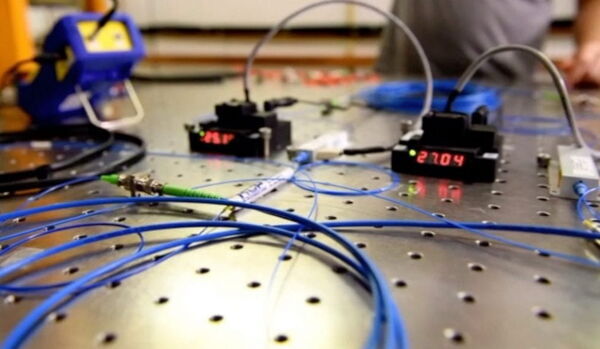
Fermilab and partners achieve sustained, high-fidelity quantum teleportation
"A viable quantum internet — a network in which information stored in qubits is shared over long distances through entanglement — would transform the fields of data storage, precision sensing and computing, ushering in a new era of communication. This month, scientists at Fermilab, a U.S. Department of Energy Office of Science national laboratory, and their partners took a significant step in the direction of realizing a quantum internet. In a paper published in PRX Quantum, the team presents for the first time a demonstration of a sustained, long-distance (44 kilometers of fiber) teleportation of qubits of photons (quanta of light) with fidelity greater than 90%. The qubits were teleported over a fiber-optic network using state-of-the-art single-photon detectors and off-the-shelf equipment. “We’re thrilled by these results,” said Fermilab scientist Panagiotis Spentzouris, head of the Fermilab quantum science program and one of the paper’s co-authors. “This is a key achievement on the way to building a technology that will redefine how we conduct global communication.” Quantum teleportation is a “disembodied” transfer of quantum states from one location to another." [...]
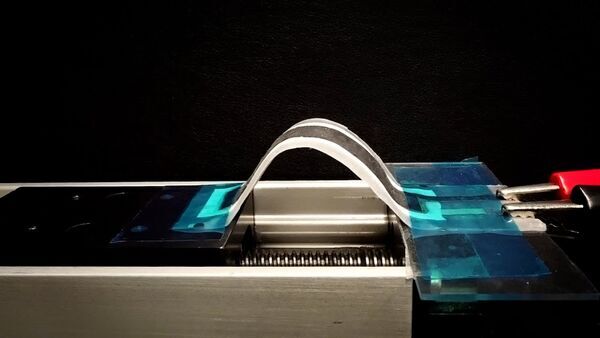
A flexible screen-printed rechargeable battery with up to 10 times more power than state of the art
"A team of researchers has developed a flexible, rechargeable silver oxide-zinc battery with a five to 10 times greater areal energy density than state of the art. The battery also is easier to manufacture; while most flexible batteries need to be manufactured in sterile conditions, under vacuum, this one can be screen printed in normal lab conditions. The device can be used in flexible, stretchable electronics for wearables as well as soft robotics. The team, made up of researchers at the University of California San Diego and California-based company ZPower, details their findings in the Dec. 7 issue of the journal Joule. "Our batteries can be designed around electronics, instead of electronics needed to be designed around batteries," said Lu Yin, one of the paper’s co-first authors and a Ph.D. student in the research group of UC San Diego’s nanoengineering Professor Joseph Wang. The areal capacity for this innovative battery is 50 milliamps per square centimeter at room temperature—this is 10-20 times greater than the areal capacity of a typical Lithium ion battery." [...]
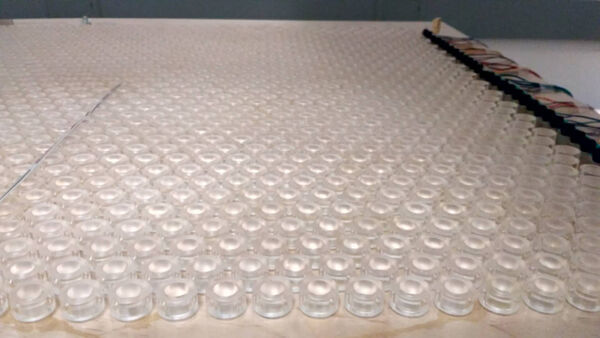
Perfect transmission through barrier using sound: research team led by Professor Xiang Zhang proves for the first time a century-old quantum theory
"The perfect transmission of sound through a barrier is difficult to achieve, if not impossible based on our existing knowledge. This is also true with other energy forms such as light and heat. A research team led by Professor Xiang Zhang, President of the University of Hong Kong (HKU) when he was a professor at the University of California, Berkeley, (UC Berkeley) has for the first time experimentally proved a century old quantum theory that relativistic particles can pass through a barrier with 100% transmission. The research findings have been published in the top academic journal Science. Just as it would be difficult for us to jump over a thick high wall without enough energy accumulated. In contrast, it is predicted that a microscopic particle in the quantum world can pass through a barrier well beyond its energy regardless of the height or width of the barrier, as if it is “transparent”." [...]

Extremely energy efficient microprocessor developed using superconductors
"Researchers from Yokohama National University in Japan have developed a prototype microprocessor using superconductor devices that are about 80 times more energy efficient than the state-of-the-art semiconductor devices found in the microprocessors of today's high-performance computing systems. As today's technologies become more and more integrated in our daily lives, the need for more computational power is ever increasing. Because of this increase, the energy use of that increasing computational power is growing immensely. For example, so much energy is used by modern day data centers that some are built near rivers so that the flowing water can be used to cool the machinery. "The digital communications infrastructure that supports the Information Age that we live in today currently uses approximately 10% of the global electricity. Studies suggest that in the worst case scenario, if there is no fundamental change in the underlying technology of our communications infrastructure such as the computing hardware in large data centers or the electronics that drive the communication networks, we may see its electricity usage rise to over 50% of the global electricity by 2030," says Christopher Ayala, an associate professor at Yokohama National University, and lead author of the study." [...]
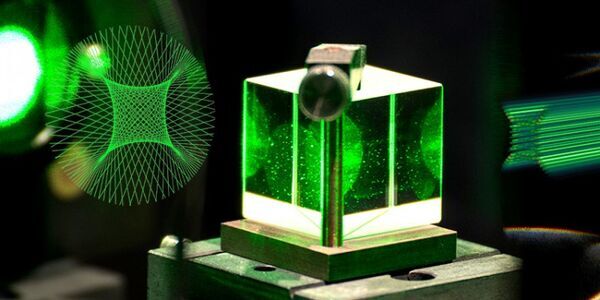
Physicists convince with their study in optics and photonics
"A publication by researchers led by physicist Prof. Cornelia Denz is among the world's 30 most groundbreaking papers of 2020, according to the journal Optics & Photonics News. In its special annual end-of-year issue, the journal selects the research highlights of the past year in the fields of optics and photonics. A committee of experts reviewed more than 115 international studies from 2020 and selected the best papers from them. The WWU research group "Nonlinear Photonics" headed by Cornelia Denz at the Institute of Applied Physics of the University of Münster had already been represented in the list with several publications in previous years. This year, the team receive a special honor: although there is no standout among the 30 selected papers, the team's work was honored with the cover of the issue, making it the secret winner of this year's selection. About the winning study Customized focal beams inspired by nature Laser-based material processing or high-resolution microscopy have already reached the nanoscale." [...]
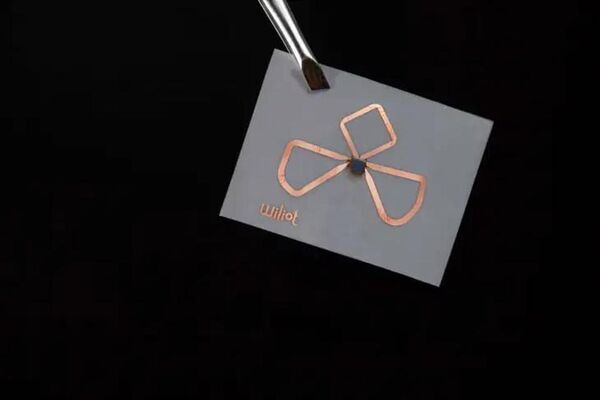
Battery-Free IoT: These Tiny Printable Computers Harvest Energy From Radio Waves
"Imagine a printable computer the size of a postage stamp with RAM, ROM, onboard sensors, certified Bluetooth, an ARM CPU, flash memory, and secure communications that does not need a battery and harvests all required energy from ambient radio waves And it costs, literally, pennies. It’s not science fiction. It’s the Wiliot bluetooth tag, and it is potentially the future of the internet of things. “We’re making a computer the size of a postage stamp that powers itself by harvesting radio frequency energy,” Wiliot senior VP Stephen Statler told me recently on the TechFirst podcast. “We’re surrounded by energy, and it’s really just been waiting for someone to tap into it, and that’s what we are doing. So we have this tag, we actually — these are computers, they look like stickers but they’re actually three core ARM processors." [...]
Documentação
A documentação é parte essencial do processo de aprendizagem e a Internet além de artigos interessantes de explorar também tem alguma documentação em formato PDF interessante de ler. Todos os links aqui apresentados são para conteúdo disponibilizado livremente pelo editor do livro.
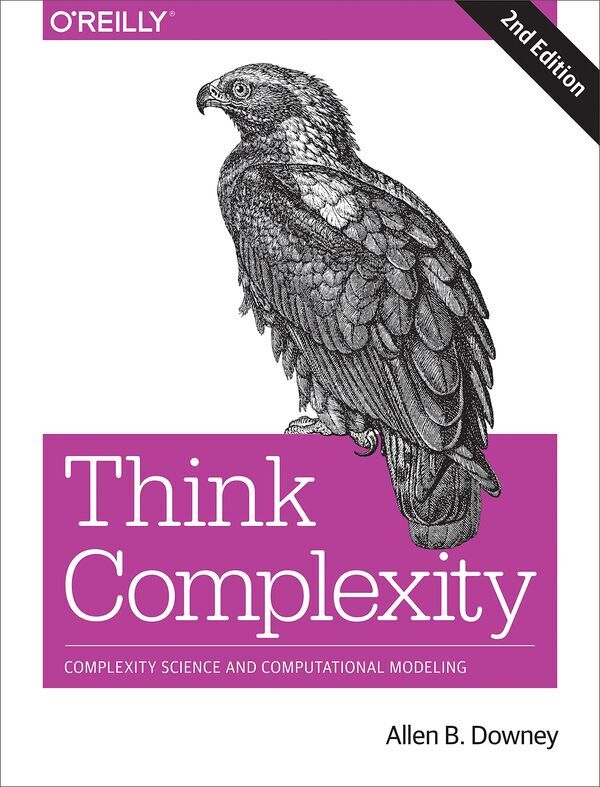
Think Complexity 2e
"Think Complexity is about data structures and algorithms, intermediate programming in Python, computational modeling and the philosophy of science. After reading the material, you’ll use graphs, cellular automata, and agent-based models to study topics in physics, biology, and economics. Whether you’re an intermediate-level Python programmer or a student of computational modeling, you’ll delve into examples of complex systems through a series of worked examples, exercises, case studies, and easy-to-understand explanations. Topics covered include: Graphs including random and connected graphs. Analysis of algorithms – the branch of computer science that considers the performance of algorithms. Small world graphs." [...]

Annotated Algorithms in Python
"Annotated Algorithms in Python with Applications in Physics, Biology, and Finance is compiled from lectures given by the author over a period of 10 years at the School of Computing of DePaul University. The lectures cover multiple classes, including Analysis and Design of Algorithms, Scientific Computing, Monte Carlo Simulations, and Parallel Algorithms. These lectures teach the core knowledge required by any scientist interested in numerical algorithms and by students interested in computational finance. " [...]
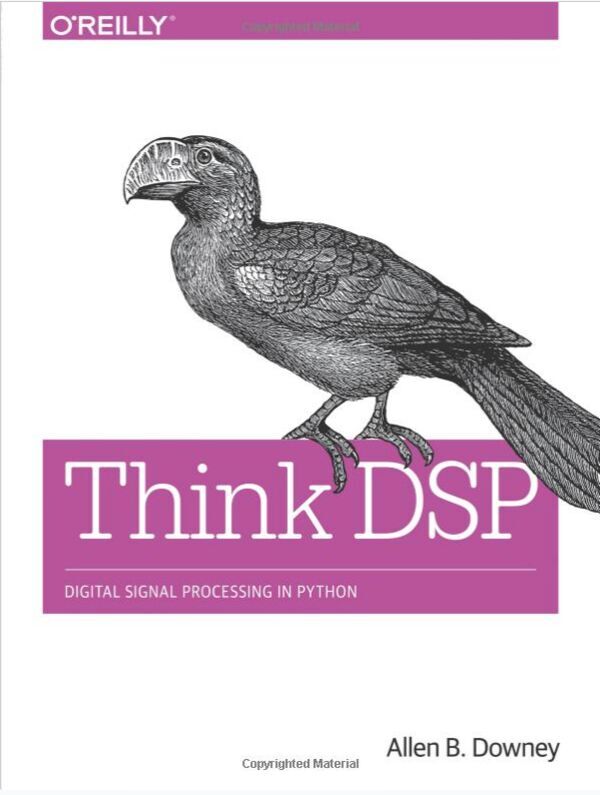
Think DSP
"Think DSP is an introduction to Digital Signal Processing in Python and includes processes for synthesizing, transforming, and analyzing signals. All of the code is written to work in both Python 2 and Python 3 with no translation. The author explains techniques such as spectral decomposition, filtering, convolution, and the Fast Fourier Transform. This book also provides exercises and code examples to help you understand the material. " [...]

Modeling Creativity: Case Studies in Python
"The topic of this work is to model creativity using computational approaches. The aim is to construct computer models that exhibit creativity in an artistic context, that is, that are capable of generating or evaluating an artwork (visual or linguistic), an interesting new idea, a subjective opinion. " [...]

Python In Hydrology
"Python in Hydrology is written for learning Python using its applications in hydrology. The book covers the basic applications of hydrology, and also the advanced topic like use of copula. " [...]

The Coder’s Apprentice
"“The Coder’s Apprentice” is a course book hat is aimed at teaching Python 3 to students and teenagers who are completely new to programming. Contrary to many of the other books that teach Python programming, this book assumes no previous knowledge of programming on the part of the students, and contains numerous exercises that allow students to train their programming skills. " [...]
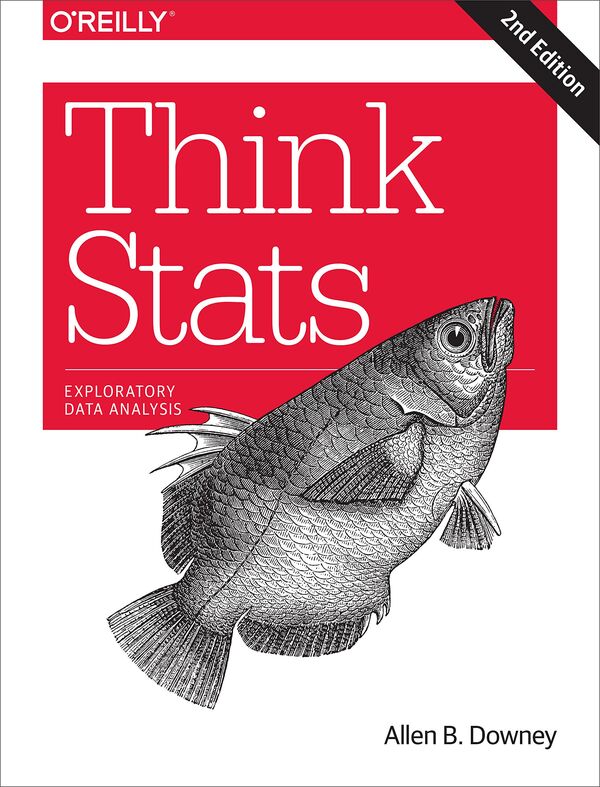
Think Stats: Exploratory Data Analysis 2e
"Think Stats is an introduction to Probability and Statistics for Python programmers. Most ideas are expressed using Python code. Chapters examine: Exploratory data analysis. Distributions. Probability mass functions. Cumulative distribution functions." [...]

The Art and Craft of Programming, Python Edition
"The Art and Craft of Programming: Python Edition is designed to be used as the primary textbook in a college-level first course in computing. It takes a fairly traditional approach, emphasizing problem solving, design, and programming as the core skills of computer science. However, these ideas are illustrated using Python. Although Python is used as the language, teaching Python is not the main point of this book. Rather, Python is used to illustrate fundamental principles of design and programming that apply in any language or computing environment. In some places, the author purposely avoids certain Python features and idioms that are not generally found in other languages." [...]
Projetos Maker
Diversos Projetos interessantes.

Reverse-engineering an early calculator chip with four-phase logic
"In 1969, high-density MOS integrated circuits were still new and logic circuits were constructed in a variety of ways. One technique was "four-phase logic", which provided ten times the speed and density of standard logic gates while using 1/10 the power.1 One notable application of four-phase logic was calculators. In 1969, Sharp introduced the first calculator built from high-density MOS chips, the QT-8D, followed by the world's smallest calculator, the handheld EL-8. These calculators were high-end products, selling for $345 (about $1800 today). Integrated circuits at the time weren't dense enough to implement an entire calculator on one chip so these calculators split the functionality across five ICs. These five chips were created for Sharp by the Autonetics division of Rockwell." [...]
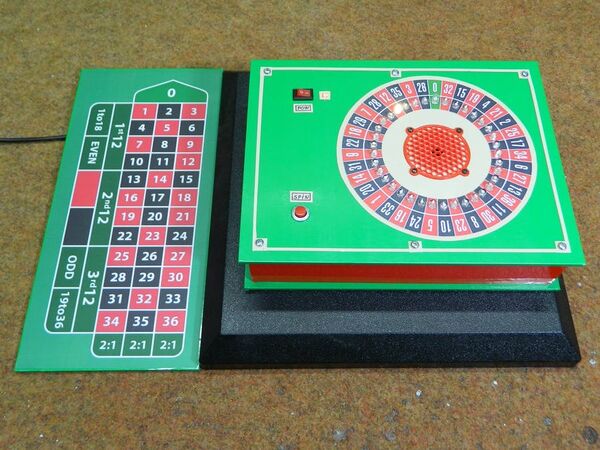
DIY 37 LED Roulette Game
"Following the principle of the original Roulette, the movement of the LED simulates a ball whose speed gradually decreases until it stops. Roulette is a casino game named after the French word meaning little wheel. In the game, players may choose to place bets on either a single number, various groupings of numbers, the colors red or black, whether the number is odd or even, or if the numbers are high (19–36) or low (1–18). Most often you can find a project of a roulette game with 10 LEDs, so I decided to do with 37 LEDs as in the original whell.Following the principle of the original Roulette game, the movement of the LED simulates a ball whose speed gradually decreases until it stops at a randomly generated number. The construction is greatly simplified with the use of an Arduino microcontroller. Device is relativly simple to build and consist few components: - Arduino Nano microcontroller - 74HC595 shift register 5 pisces - 37 Leds - NPN transistor - 2 Resistors - and Buzzer" [...]
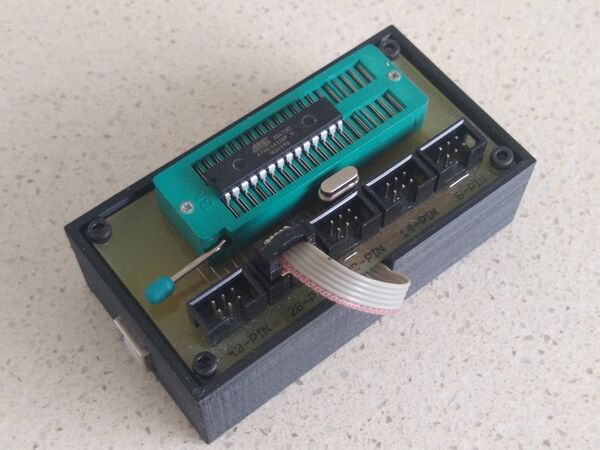
AVR ISP Programmer V2
"A programmer designed for easy programming of ATtiny13, ATtinyx5 series ATtinyx4 series, ATtiny2313, ATmega8 series, ATmega328, ATmega8515 Amtel AVR Microcontrollers come in a number of variants. The one most Arduino users know is the 28 pin ATmega328 variant. However AVR chips come in 8-Pin, 14-Pin, 20-Pin and 40-Pin packages as well. The less pins on a chip mean less IO ports. The Digispark board which is an Arduino variant uses a ATtiny85 microcontroller and has only 5 IO pins. Arduino boards (eg Uno, Mega, Digispark) load software from the Arduino IDE via the USB port." [...]

RC & Programmable Domino Laying Machine
"How to 3D print and assemble your very own programmable and remote controllable automatic domino laying machine. Who likes knocking down absurdly long runs of dominoes? I do. Who doesn't like laying them all by hand. I don't. That's why I made this." [...]

DIY Air Quality Monitor – PM2.5, CO2, VOC, Ozone, Temp & Hum Arduino Meter
"Have you ever wondered about the quality of the air you are breathing, or maybe, why you sometimes feel sleepy in the office or tired in the morning even after sleeping all night? Poor air quality can lead to many negative health effects as well as can cause tiredness, headaches, loss of concentration, increased heart rate and so on. Monitoring the quality of the air may actually be more important than you realize. So, in this tutorial we will learn how to build our own Air Quality Monitor which is capable of measuring PM2.5, CO2, VOC, Ozone, as well as temperature and humidity. Overview I will explain how each of air quality parameters affect us and how the sensors work. The brain of this project is an Arduino Pro Mini board which in combination with a 2.8” Nextion touch display provides a decent user interface." [...]

TinyCalibrator - OSC Calibrator and High Voltage Fuse Resetter
"Because the 8-pin ATtinys only have a few GPIO pins available, they are usually operated without an external clock. The internal oscillator does a good job in most applications, but when it comes to precise timing, its +/-10% accuracy is often insufficient. Fortunately, the oscillator can be calibrated, increasing its accuracy to +/-2% or better. There are a few ways to perform this manual calibration, but several steps are required. The TinyCalibrator does this fully automatically by a push of a button. In order to make the device more versatile, a high voltage fuse resetter was also integrated, with which "bricked" ATtinys can be reset to the factory state." [...]
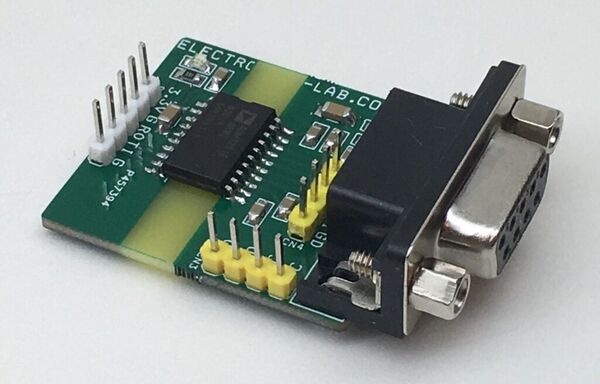
Isolated, Single-Channel RS232 transceiver (Isolated RS232 to UART)
"The project presented here provides an isolated interface between the RS-232 cable network and the connected UART systems to protect against voltage spikes and ground loops within the noisy environment and improve system reliability. The project achieves a robust data communication link in harsh industrial environment. ADM3251E chip from Analog Devices is the heart of the project, this chip is a high speed, 2.5KV fully isolated, single-channel RS-232 transceiver device that operates from a single 5 V power supply. Due to the high ESD protection on the RIN and TOUT pins, the device is ideally suited for operation in electrically harsh environments or where RS-232 cables are frequently being plugged and unplugged. Four external 0.1 μF charge pump capacitors are used for the voltage doubler/inverter, permitting operation from a single 5 V supply. Project operates at data rates up to 460kbps." [...]

POLY555 Synth
"It's an analog, 20 note polyphonic, square wave synthesizer based on the 555 timer chip. The enclosure and keys are 3D-printed, its models were programmed in OpenSCAD, and its PCB was designed in Kicad. A little history The monophonic (one note at a time) OKAY synths I made a couple years ago also used the 555 timer as their oscillator, as a sort of homage to the ubiquitous chip's long history within the electronics community. When I showed one to folks in the scene, "the best 555 synth ever" was an easy, understandable pitch. But the first question I always got was "How can it play more than one note?". To that I'd pop the hood and explain that since it has only one 555 to make one oscillator to make one note, to have more notes and still use the 555 I'd need... more 555s!" [...]

ATtiny85 Candle
"Fast and simple project that imitates candle light powered with attiny85 and CR2023 This project utilizes attiny85 as a candle. PCB is built from two single-sided copper boards. It flickers for about 15 minutes, and after that, it goes off. It can be lit again with a button for another 15 minutes, and the cycle repeats till the battery die. The idea comes from conventional candles mixed with electronics :) It still looks very realistic, it cannot burn out, and it powers off automatically. Additionally, I printed 3d enclosure, and add some baking paper as a light diffuser." [...]
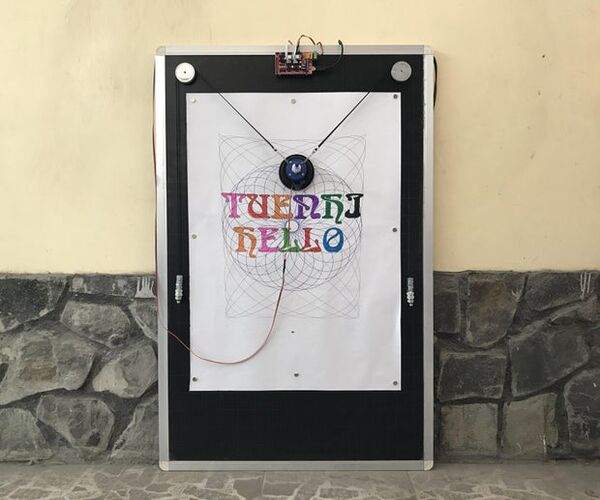
Blackboard V-Plotter
"In this instructable, I'd like to share how to build a vertical plotter that can draw texts and images on the blackboard. Let's getting started. Main components: 1pcs x Arduino Mega 2560. 1pcs x RAMPS 1.4 Controller. 2pcs x A4988 Stepper Driver Module. 2pcs x Stepper Motor NEMA 17." [...]

Robotic Trombone: The RoboTrombo Music Machine
"Because we need to prove there are still things people do better than machines... An iSax Laboratories creation. Thank you Martin Molin @ Wintergatan for inspiration! The original idea was to produce a MIDI controlled music machine that could play any song. It was however extremely difficult to control it reliably. When a human trombone player produces a tone it is a combination of lip tension, pressure against the mouthpiece, airflow, air pressure, resonance in the mouth and probably some other variables. The lip part proved too hard to recreate." [...]
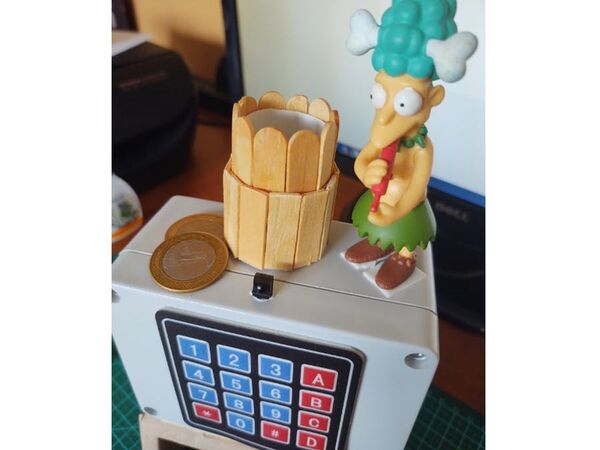
Smart Coin Feeder
"Retrive coins the old way pushing buttons or the future way through Alexa or any voice assistant. This is another "Thing" I made inspired in my previous project Cuckoo IR Alexa exploring the home automation with the combo " Alexa and Universal Remote Control" people who loves (oh my...) Alexa, use to have. As mentioned before in the Cuckoo project, it will work with any other voice assitants. This project uses an ordinatry Nano board, Servo, Keypad and an IR receiver led. No need the Arduino Iot Cloud. Browsing for project ideas, I start to give attention to these ingenious pet feeders." [...]

Animated Flame Pendant
"Turn on your heartlight Let it shine wherever you go Let it make a happy glow For all the world to see A little fire for your heart! But there’s no actual flame here, no heat…instead, LEDs and a microcontroller make a virtual flame that dances like the real thing. (In fact it’s playing a tiny video loop of a real candle.) We planned this animated flame simply as a piece of high-tech jewelry, but other uses are possible…a fire or lantern effect on cosplay props, a safer alternative to having candles on the table or as part of a holiday display, or a unique night light for finding your way to the bathroom at night. It’s a simple circuit that can be built either as a pendant or as a tabletop piece. Fair warning though: the pendant variant is tricky…it’s a very tight space requiring ace soldering skills and some unconventional methods." [...]
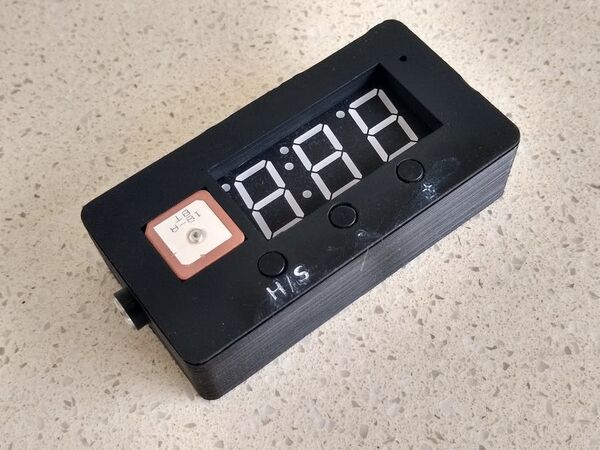
Car Windscreen HUD
"A heads-up display for your car's windscreen showing your speed and/or heading. This project is a rebuild of Car HUD - Windscreen Display for Speed & Compass by marcozonca. I really liked the concept. Having a number of 0.8in 4-Digit 7 Segment displays left over from my WeMos Flower Alarm Clock build (I could only buy the displays in lots of 5), this seemed like a good project to use one on. The completed unit measures 97x50x25mm. Hardware design To reduce the size of the finished unit, I decided to redesign the circuit to use a MAX7219 display driver and a ATtiny1614 microprocessor." [...]
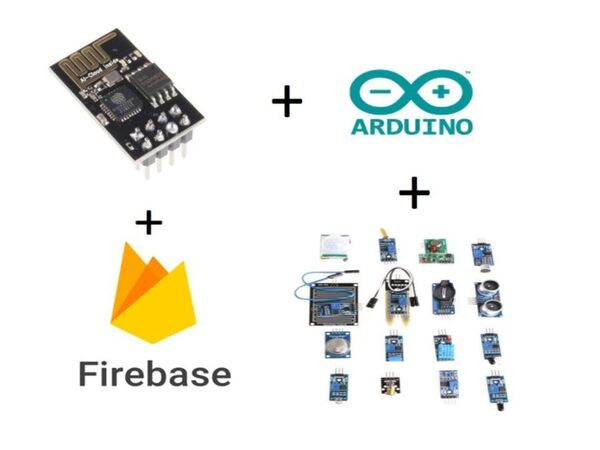
Send multiple sensors data to Firebase using ESP8266
"Send multiple sensors data to Firebase realtime database using ESP8266 and Arduino. In this tutorial, you will learn how to send multiple sensors data to Firebase realtime database using ESP8266 (ESP-01) module and Arduino UNO. What You Will Learn How to sent sensors data to ESP8266 using serial communication. How to store sensors data in Firebase realtime database. For demonstration purposes I use two IR sensors and one ultrasonic sensor but you can use whatever you want sensors. This is one method to sent sensors data to Firebase realtime database using ESP8266." [...]
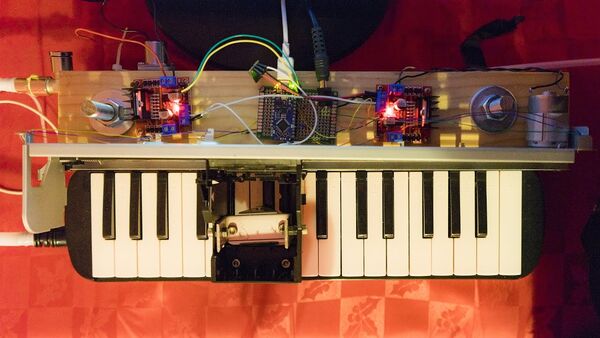
Self-Playing Melodica
"Turn your melodica into a compressed-air melodica controlled by Max and Arduino. It tries to follow the melodic contour it listens to! Disclaimer: this project aims at building an inaccurate self-playing melodica. If you want to build an accurate one, use a DC motor with encoder (best option) or a stepper motor. You will at least be able to make it play diatonic (white keys) melodies the right way. For my project "AI've just started to learn to play" I built a robot melodica which listens to fragments taken from YouTube melodica tutorials and tries to reproduce the melody in real time." [...]

SafetyLock: a Smart Lock Made With Raspberry Pi (Fingerprint and RFID)
"Have you ever wanted a more accessible way to secure your house? If so, this is the solution for you! I made SafetyLock, this is a lock that can be opened with your fingerprint, a RFID badge and even through a website. Thanks to this concept you will always know who entered your home at what time of the day, you'll also see how many times someone stepped in front of your door that day. For my project i used multiple parts that i will be listing below, I'll also add the excel file with all the corresponding prices of the components as also the websites from which I ordered them. Components: Raspberry Pi 3 model B+ Raspberry Pi power supply Raspberry Pi T-cobbler Electronic doorlock 25cm Electronic doorlock 6mm Universal AC-DC adaptor Relay module Velleman PIR motion sensor Velleman RFID module - RC522 RFID tag Optical fingerprint scanner USB to TLL serial adaptor Raspberry Pi camera module V2 LCD display 16*2 Jumper wires (m to f) and (m to m) 10 Kohm resistors Materials: MDF wood 6mm Hinges Tools: Soldering iron Super glue Saw Sandpaper Lasercutter" [...]

Professional Weather Station Using ESP8266 and ESP32 DIY
"LineaMeteoStazione is a complete weather station which can be interfaced with professional sensors from Sensirion as well as some Davis Instrument component (Rain Gauge, Anemometer) The project is aimed as DIY weather station but just requiring the assembly part, because the boards will already be given programmed by me as well as the complete PCB. The code will be shared Opensource for the people who wants to try to do it from the beginning or modify it! YOU CAN FIND THE WEATHER STATION IN WeatherCloud, Wunderground and LineaMeteo (Italian Weather network!) (Anemometer is not Installed) and here also a Version in THINGSPEAK for the comparation between SHT3x and SHT1x. I'm using the SHT1x at the moment to monitor the temperature inside the weatherproof box, but you can use it also to monitor ground temperature and humidity or other purposes! It works with a combination of ESP8266 and ESP32 development boards and is composed mainly of 3 devices: 1." [...]

Persistence of Vision Christmas Ornament
"As you can tell from my list of instructables, each year I try to come up with a new and interesting Electronic Christmas Ornament. They are usually loud, heavy, and something generally too big for the average tree, with that in mind I had the perfect idea. A loud, fast spinning, bright, persistence of vision LED display the size of an ornament. That way you could make it look like any ornament you want. Or put cool images on it. I had the idea, now I just had to make it." [...]

Indoor Hand-held Co2 Detector
"How do people know there is enough air exchange in their rooms? There is a simple way to make that determined by Seeeduino XIAO. Project Background Most transmissions of coronavirus occur indoors, the majority of those cases are caused by the inhalation of particles containing the virus. The best way to prevent the spread of the virus into the home or workplace is to keep infected people out. However, about 40% of cases are asymptomatic, and these asymptomatic infected people can still spread the virus to others, which is difficult to avoid. Shelly L. Miller, a professor of mechanical engineering at the University of Colorado Boulder, recently published an article on the Popular Science website, which is about the best way to reduce the risk of indoor infections; Getting fresh air Monitoring carbon dioxide concentrations, and using air purifiers." [...]

Wireless AC Current Detector
"While making my previous Instructable (easy infrared proximity sensor) I figured out a few things about using 2 transistors in a row to amplify a very weak signal. In this Instructable I will elaborate on this principle which is also called the "Darlington principle". In this circuit, an antenna (spring) is connected to the base of first transistor. When we place this antenna near an object that is AC energized, a small current gets induced into the antenna due to electromagnetic induction. This current triggers the first transistor. Output of the first transistor triggers the second." [...]
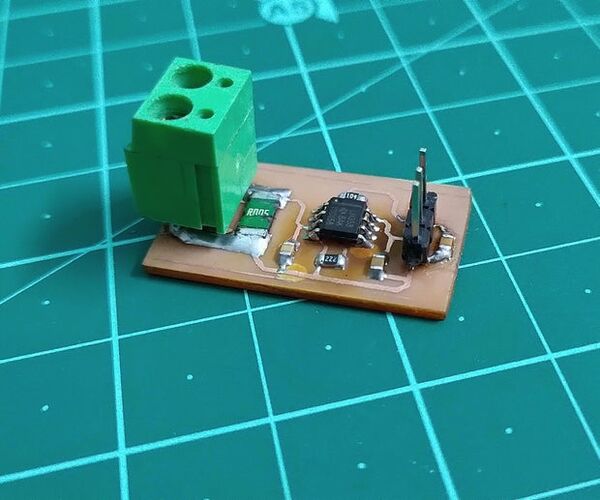
DIY Current Sensor - 2.0
"Hello there! I hope you all are fine and in good health. This instructable is about making your own current sensor that is compatible with Arduino and most other widely popular microcontrollers. This project features a compact design and an all SMD component based circuit, making this sensor module very compact for it's range. This current sensor can easily be used for measuring currents up to 15 Amps constant and can even handle about 20 Amps peak. I had previously built a shunt current measurement module using a home made shunt but it had a few limitations- The wire was quite long which may not be suitable for small devices." [...]

DIY LED Advent Calendar
"I'll be describing how we made this analog clock that double functions as an advent calendar. There are 24 ws2811 leds around the clock in a circle and each of them light up green to the days before Christmas. On Christmas day, all the lights are lit red. During every other month the lights are a solid blue color. It's driven by an es8266 that can be managed by the Arduino IDE, but a raspberry pi would also work. This can be highly customized and changed to your liking, and it can even run animations outside of the normal solid colors." [...]
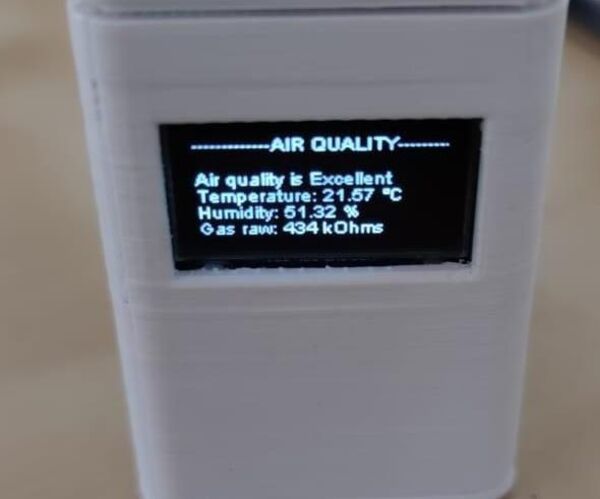
Indoor Air Quality Meter
"Simple project to check the air quality in your house. Since we stay/work from home a lot lately, it might be a good idea to monitor the quality of the air and remind yourself when it's time to open the window and get some fresh air in. Parts BME680 CJMCU OLED Display (128 x 64) ESP8266 Wi-Fi Chip (NodeMCU V1) Case: https://www.thingiverse.com/thing:1720314 (or any other case you might like) Dupont wires Tools Soldering iron" [...]
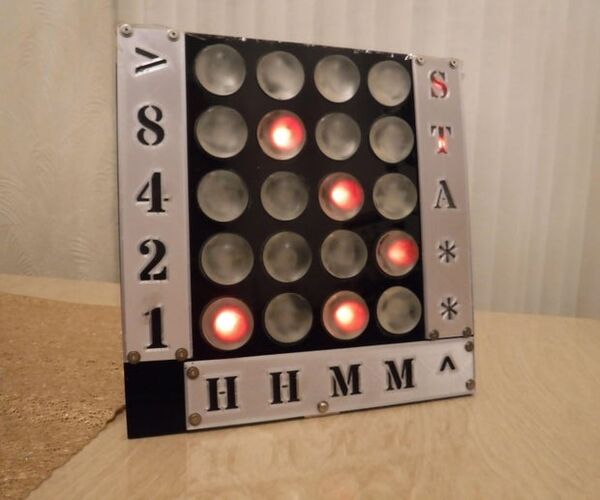
BigBit Binary Clock Display
"In a previous Instructable (Microbit Binary Clock), the project was ideal as a portable desktop appliance as the display was quite small. It therefore seemed appropriate that the next version should be a mantel or wall mounted version but much bigger. There would be no need to reconstruct another controller but to use the existing clock and add an interface for the display. This Instructable details the process of creating the BigBit display and the software updates to the existing clock. Supplies: Perspex Adhesive Black Perspex Sheet 21.5cm x 21.5cm x 5mm 3D Printer for plaques & nut holder (optional), as these could be created by other means. BlocksCAD 2 part Epoxy Resin M2.5/8mm screws * 13 qty M2.5 washers * 13 qty WS2812Neopixel Button LED's * 25 qty." [...]
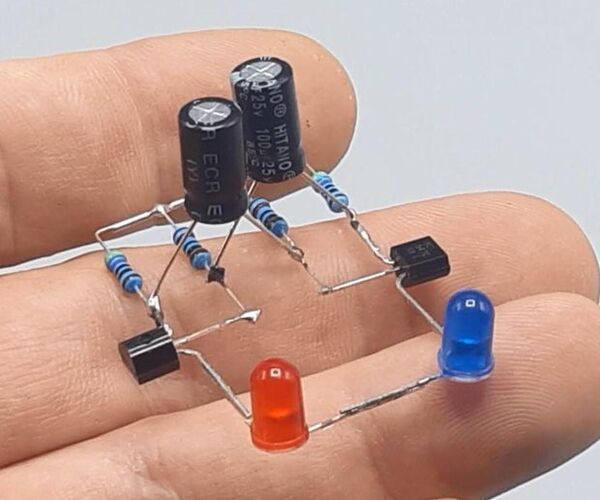
Simple Flip Flop Circuit
"In this Instructable I show you how to make a Flip Flop LED circuit. The special thing about this circuit is that it does not use an IC (Integrated Circuit). By using different resistors, capacitors and transistors, I succeeded in this project to make a circuit that lights the LED lights one by one. I will explain how the circuit works in the last step. Supplies: 2 LED lights (any color you want) 2 BC547 transistors 2 470 Ohm resistors 2 10K resistors 2 100 uF capacitors" [...]
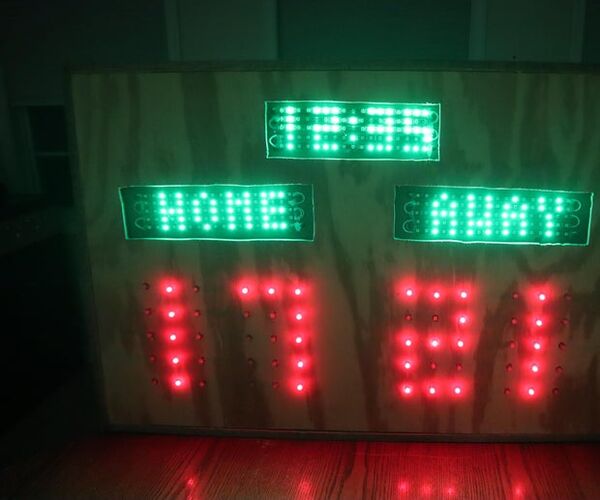
Raspberry Pi Scoreboard
"Today I'll explain how I made this scoreboard which is controlled by a raspberry pi and powered by a 5V power supply. It uses a combination of ws2811 and ws2812b leds for the lighting and the structure is made out of plywood and red oak. For a description on setting up the code and circuit you can watch the video below: Supplies: ws2811 leds ws2812b leds Raspberry Pi Zero (can use any kind) 5V Power Suppy SN74HCT125 Integrated Circuit" [...]
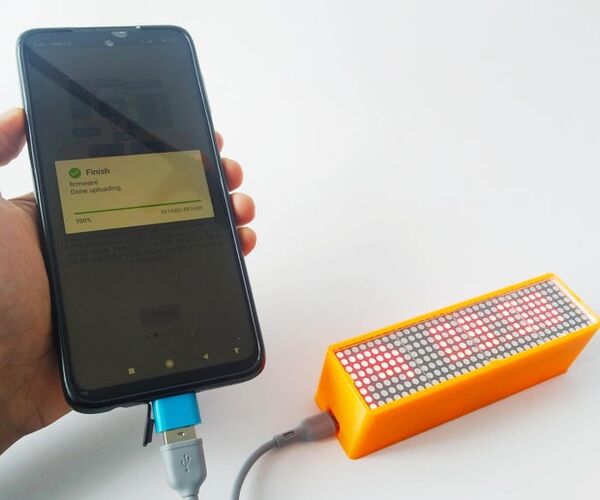
Digital Clock LED Dot Matrix - ESP Matrix Android App
"The ESP Matrix Board that I developed for use in this project uses PCBWAY PCB services. By following this instructable you can make a Digital Clock LED Dot Matrix at a relatively cheap cost and don't require coding skills, just follow it step by step from start to finish. Here are the components that you will need to make this project: 1 x PCB ESP Matrix Board (PCBWAY) 1 x LED Dot Matrix MAX7219 4in1 Module 1 x NodeMCU Amica ESP8266 1 x USB to TTL CP2012 Module 1 x RTC DS3231 Module 1 x Active Buzzer 5V 1 x Tact Switch 22mm 1 x 5 pin Male Header 90 degree 2 x 5 pin Male Header 2 x 15 pin Female Header 1 x 4 pin Female Header USB OTG Adapter Micro USB Cable Case 3D Printing Part Acrylic transparent 3mm" [...]
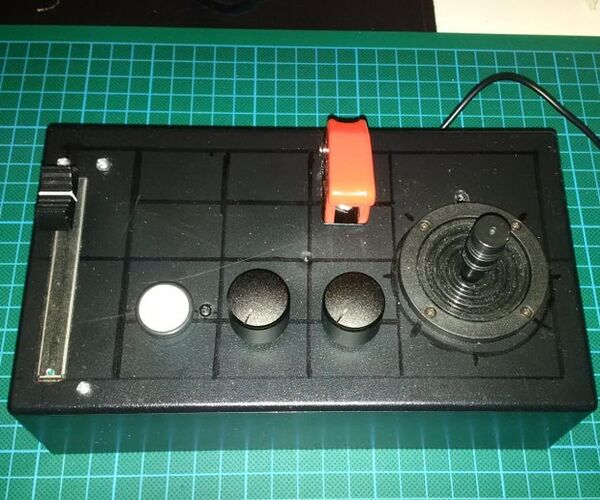
$50 Analog Joystick (HOTAS) With Haptic Feedback for Flight Sim
"The aim is to create a fully functioning USB HOTAS* joystick from low cost electronics parts. I bought Elite Dangerous when it was released for the Mac and realised very quickly I was going to have the floor wiped with me if I didn't have a decent joystick, the problem is a really good joystick costs 100's of dollars or $450 in the case of this one: http://arstechnica.com/gadgets/2014/09/flying-in-s... . Its very difficult for me to tell my wife should doesn't need another pair of shoes if I order a $450 joystick for playing a "space game". SPECS Fully USB powered Mac / PC / Linux Compatible Programable Micro Controller Analog X/Y Axis primary joystick Analog X/Y Axis sub controller Analog Throttle capable of 1024 acceleration points and boost Weapon Arming toggle switch 2 x Analog Trimming Knobs 4 x Programable Momentary Buttons 4 Vibration motors *HOTAS Stands for Hands on Throttle and Stick, so this is not a 'typical' HOTAS Joystick, by some definitions it would have to have a DPAD on the joystick controller, where my DPAD is controlled by the thumb of the throttle hand. But definitions aside this is an extremely capable game controller and infinitely customisable thanks to the on board programable micro controller. Parts List $10 - Arduino Leonardo $3 - Old Wii Nunchuck $19 - Joystick with potentiometers - type used for CCTV systems or wheelchairs $3 - ABS Enclosure $2.5 Flip up weapon toggle switch $4 - Sliding Potentiometer $0.5 - 2 x100K Potentiometers $0.5 - a few Dupont cable connectors $2 - 4x mini vibration units $2 - L289n Motor driver $2 - 4x minibuttons $2 - 'Carbon fibre' vinyl wrap" [...]
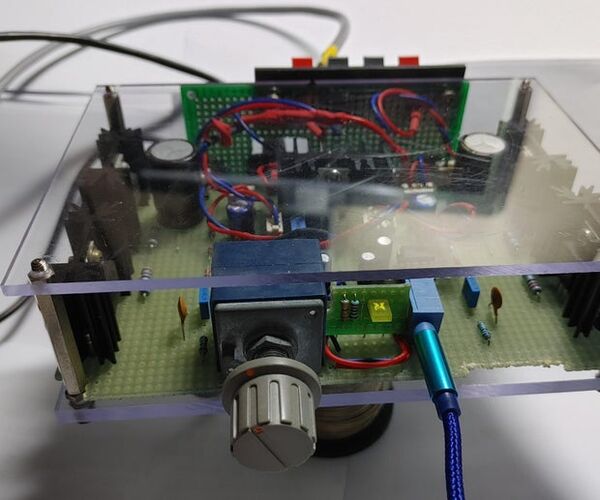
PC Speaker Amplifier
"This is small power (Less than 10Watt) transistor amplifier using LM386 and TIP41/42. Although output power is not much impressive, still it can well serve as an amplifier for PC speaker and MP3 player. When living in a packed apartment together, a half output power from this amplifier easily produce complains by my family. Anyway, it can drive 8ohm and 4ohm speaker with maximum 12V power supply. I got the original schematics from the website (http://www.bristolwatch.com/radio/lm386_power_amp.htm, Lm386 Audio Amplifier Adding Push-Pull Output Stage). As the circuit not using dual polarity (+/-) power supply, overall circuit complexity is not much high and compact size (15cm(W) x 10cm(D) x 5cm(H)) of chassis can be used as shown in the picture above." [...]
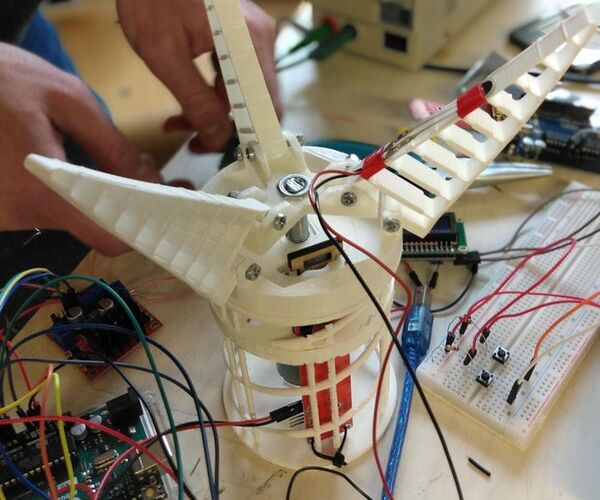
Three-Fingered Electric Gripper
"Are you a mechatronics fan and are looking for a simple Arduino project to do? Well, here is a simple yet very important mechanism used in many robots nowadays. Robots are designed to satisfy a certain need or to make life easier in a certain way. The gripping action is actually a common task performed by many robots to fulfill their assigned mission. In this instructable, you will learn how to make a three-fingered electronic gripper automated with pushbuttons. Bill of Materials Mechanical Components: Threaded rod 8mm diameter 8 mm nut to fit with the rod Electronic Components: Microcontroller: Arduino Uno Board Sensors: pressure sensor (x3) Dual output linear potentiometer 12V DC geared motor L298N H-bridge motor driver LCD 16x2 I2C 12 V DC power supply Breadboard Push-button(x2) 10kOhm resistors(x5) Jumper wires Tools and Equipment: 3D printer PLA for all the printed parts (other materials can also be used, like ABS) Laser cutter MDF 3mm Soldering iron Multimeter Metal saw Electric tape Wire Stripper Pliers Hammer Screwdriver Zip ties small size 3mm nuts and bolts" [...]
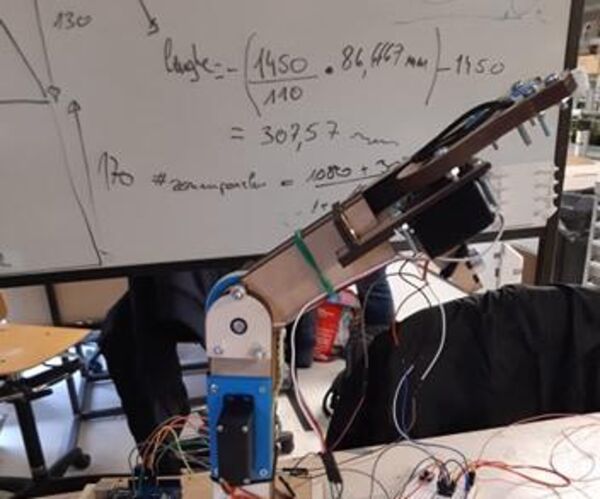
Robotic Arm With Gripper
"Harvesting lemon trees is considered hard work, due to the big size of trees and also due to the hot climates of the regions where lemon trees are planted. That's why we need something else to help agricultural workers to complete their work more easily. So, we came up with an idea to ease their job, a robotic arm with gripper that picks the lemon from the tree. The arm is about 50cm long. The working principle is simple: we give a position to the robot, then it will go at the right place, and if there is a lemon, its gripper will cut the peduncle and grap the lemon at the same time. Then, the lemon will be released on the ground and the robot will go back to its initial position." [...]
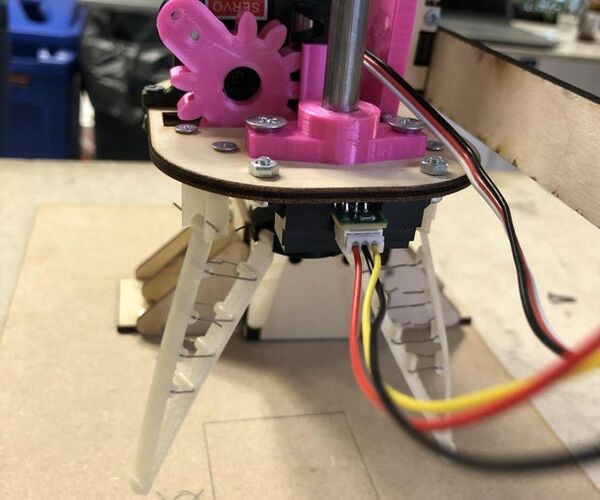
Fruit Sorter Robot Using Flexible Gripper
"Hello Everyone, thank you for showing interest in our project. In this project, we are showing a fully automated robot that sorts fruits and vegetables based on their color. The project happened in the context of the Bruface program and more precisely in the mechatronics 1 course. The Brussels Faculty of Engineering (in short, Bruface) is a joint initiative between Vrije Universiteit Brussel (VUB) and Université Libre de Bruxelles (ULB), offering a broad spectrum of fully English-taught Master Programmes in the field of Engineering. The team is composed of 3 members Ankit Pandey Tigran Pletser Julien van Delft The main purpose of the Mechatronics course is to teach both mechanical structure and electronics. This is the reason why we chose a robot with a mechanical solid structure and a moving flexible gripper able to detect the fruit in a certain zone and sort them by color." [...]
That's all Folks!



